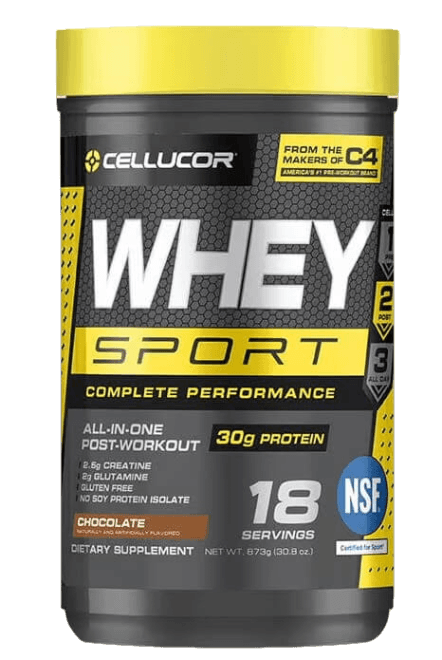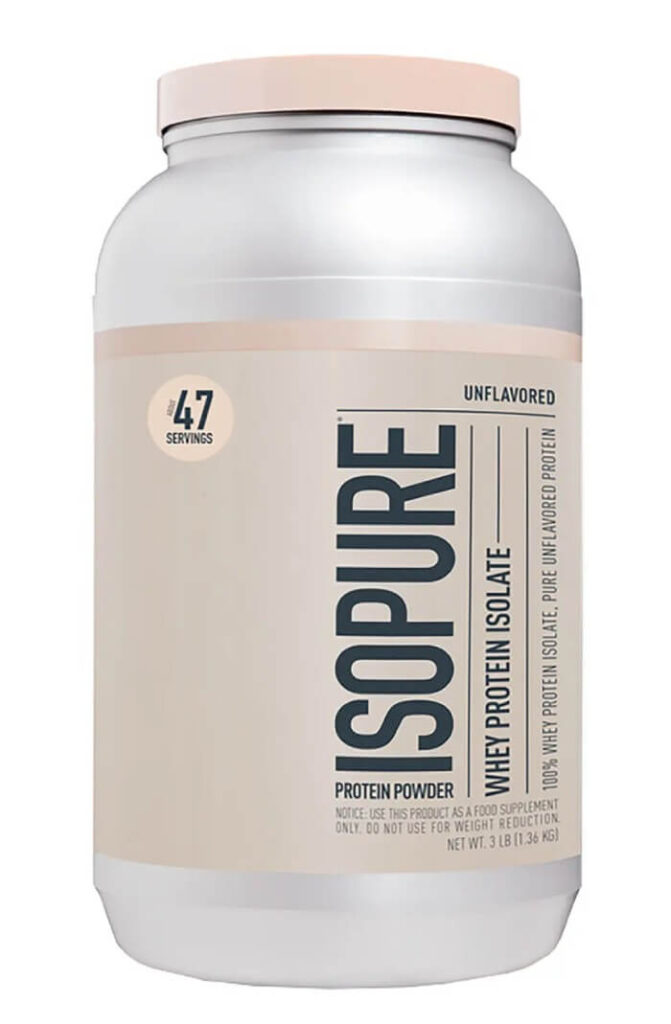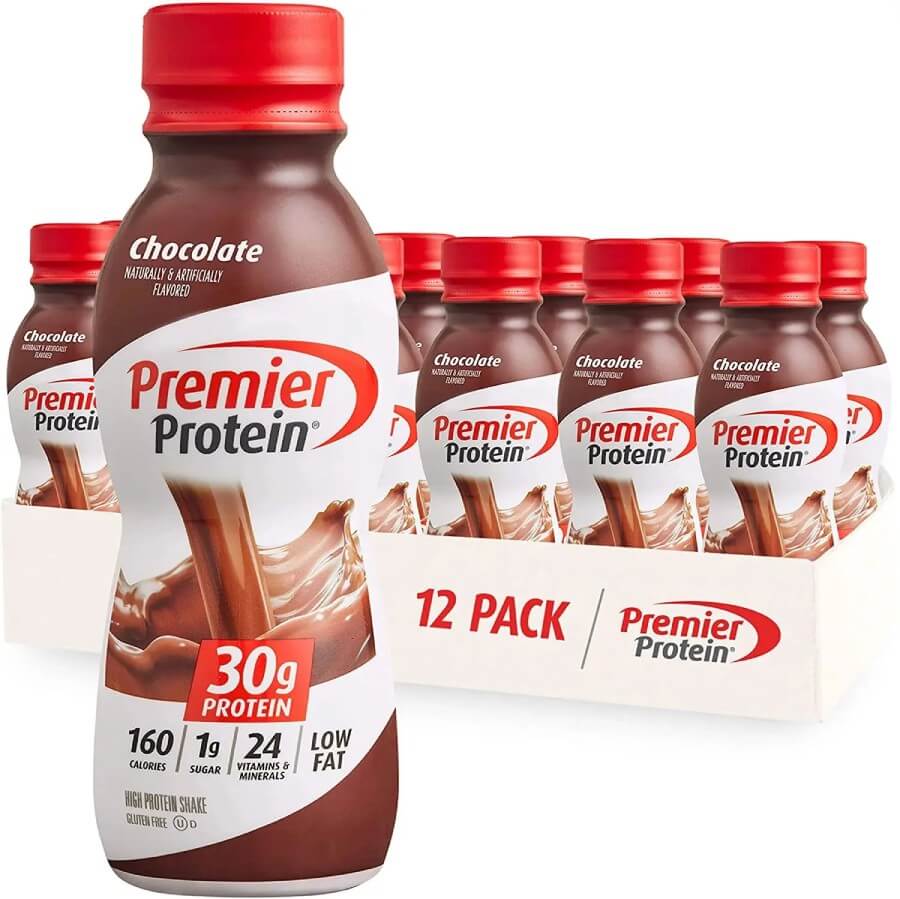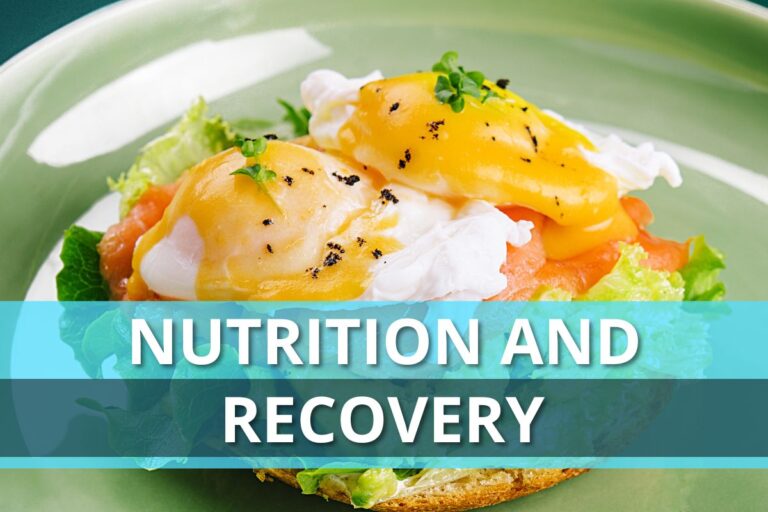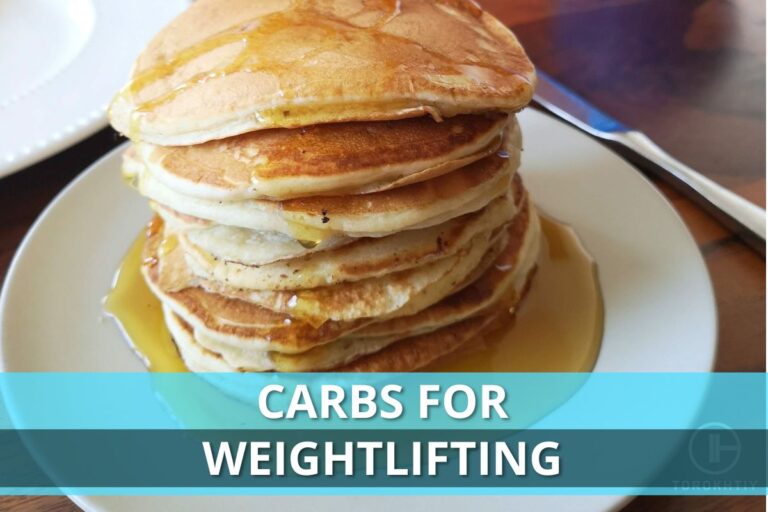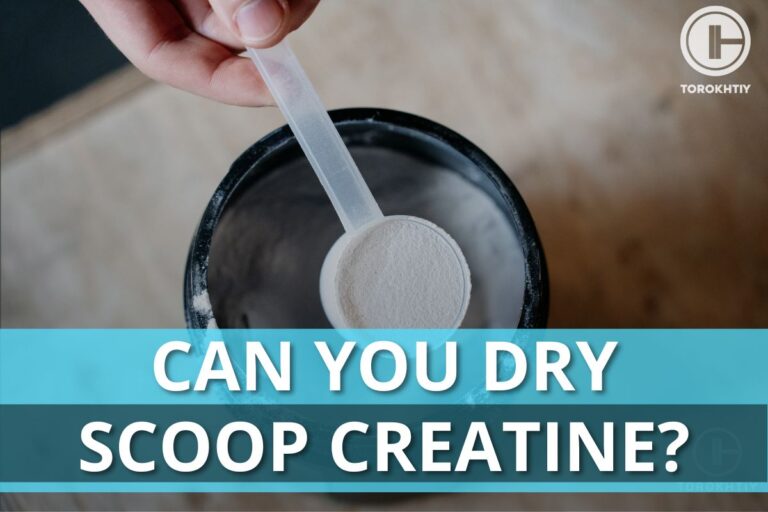How Many Calories in a Protein Shake?
Whether your goal is to gain muscle mass or lose weight, the amount of calories and protein in your diet are the key important factors.
Protein shakes are a convenient option for adding protein to your overall diet, and many people, especially newbies, are wondering how many calories in a protein shake. The best way to know this is to find out what your protein shake consists of.
In this article, I will tell you what the calorie content of protein shakes is. It will help you make the best choice depending on your fitness goals.
How many calories in a protein shake? This depends on the specific protein powder, as well as the ingredients you add to the protein shake. In general, it can have from 100 to 500 and even more calories per drink.
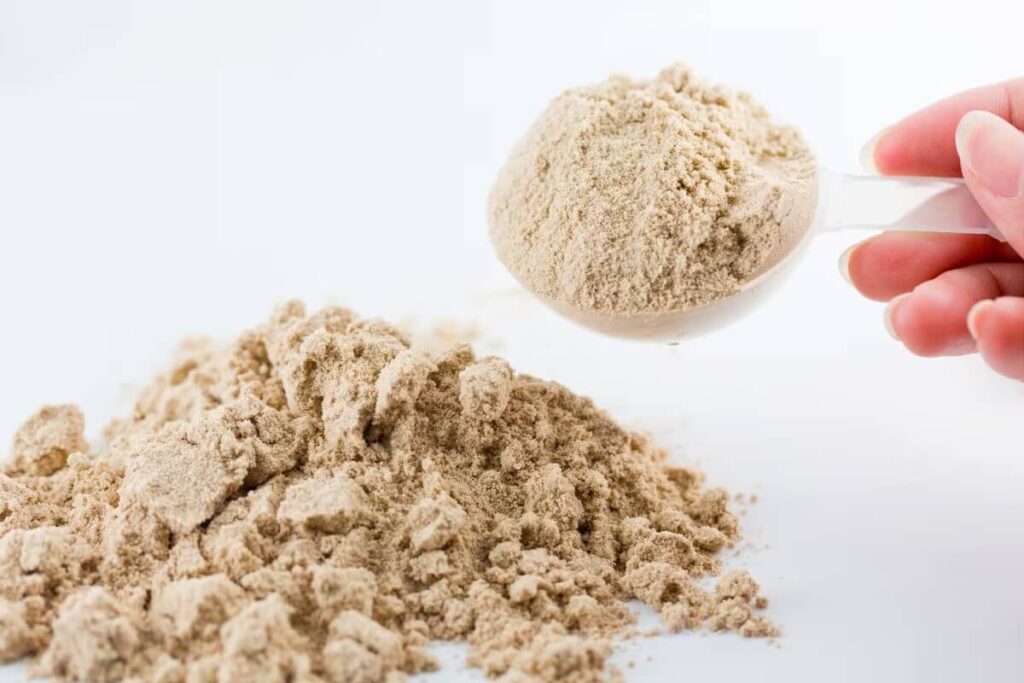
What Determines the Calories in a Protein Shake?
Protein Supplement Macros Breakdown
First, you need to look at the composition of protein powder, where the macros (protein, fats and carbs) and calorie content per serving are indicated. Typically, the whey protein shake calories are around 120-130 per serving, if you mix it only with water, without adding milk, fruits and other ingredients.
Depending on the degree of filtration and additional processing methods, whey protein comes in the form of concentrate, isolate and hydrolyzate. And while the calorie content of a serving may not differ between these varieties of whey protein, they differ in the distribution of proteins, fats and carbohydrates.
Concentrate usually contains more fats and carbohydrates (including lactose) than isolate or hydrolyzate. Whey isolates and hydrolyzates typically have a higher percentage of protein-by-weight ratio.
As for hydrolyzate, it is a subset of whey protein isolate in a pre-digested form. The average protein amount in whey protein is 24-25 per serving, regardless of whether it is a concentrate, isolate or hydrolyzed whey.
The average calorie and protein content of a serving of another type of milk-based protein – casein, is the same as that of whey.
The average calorie content of vegan proteins is usually higher – 150-160 kcal per serving, because of the higher amount of carbohydrates and fats. The amount of protein is the same or slightly lower – 20-25 grams per serving.
Below, we will consider several protein powders and ready-to-drink shake that we recommend. Now let’s talk about another component that can affect the calorie content of the finished protein shake.
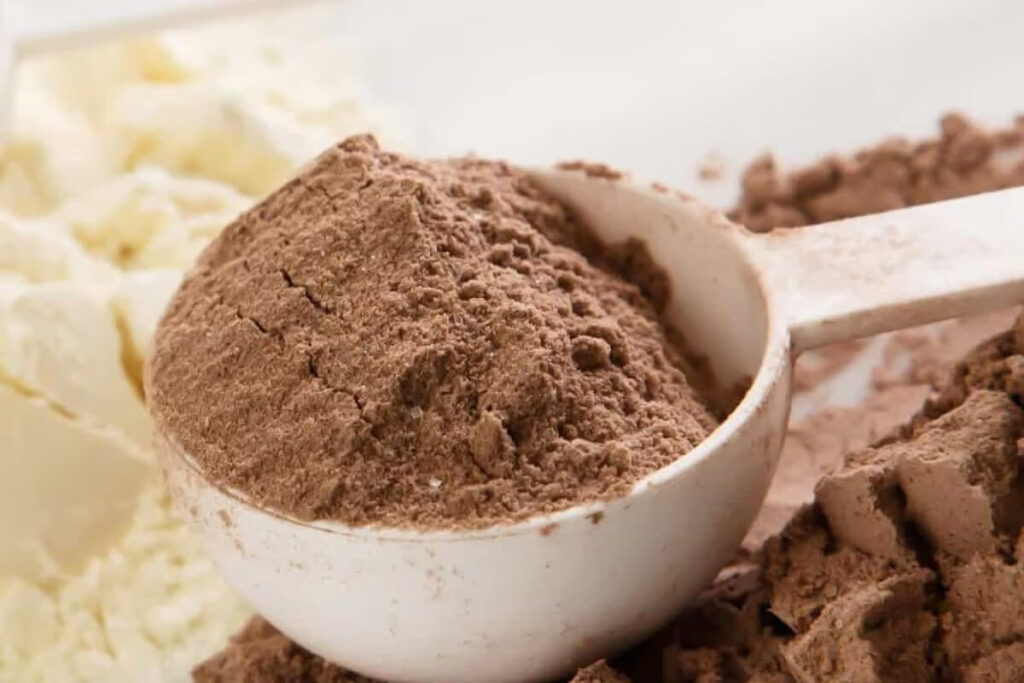
What Liquid Do You Mix With?
Working out how many calories are in your protein powder is only half the picture. It is also necessary to consider the energy value and macronutrients breakdown of the liquid in which you mix the powder. Calories in protein shake with water will remain the same as indicated in the protein powder serving.
If you want to add more taste to a drink and choose milk or juice as a liquid, then you also need to consider macros and calories content from added liquid ingredients.
For example:
- 1 cup of light soy milk is 75 calories, 6 grams of protein, 8.5 grams of carbs and 2 grams of fat.
- 1 cup of unsweetened almond milk contains 37 calories, 1 gram of protein, 3 grams of carbs and almost 2.5 grams of fat.
- 1 cup of whole milk contains 150 calories, 8 grams of protein, 12 grams of carbs and 8 grams of fat.
- 1 cup of low-fat 1% milk contains 105 calories, almost 8.5 grams of protein, 13 grams of carbs and almost 2.5 grams of fat.
- 1 cup of skim milk is 83 calories, 8.5 grams of protein, 12 grams of carbs and almost zero fats.
- 1 cup of freshly squeezed orange juice will give you 110 calories, 25 grams of carbs, 0.5 grams of fat and almost 2 grams of protein.
These beverages should be taken into account in the total calorie content and protein shake macros. Depending on your goals, you can choose water or any beverage that takes into account your protein, fat, and carbohydrate needs.
If you want to increase the protein in your shake and can afford a significant amount of carbohydrates, low-fat or skim milk can be a great candidate. If you’re getting enough protein, but want to increase your carbs, juice may be the best option.
If you are using protein powders as a source of extra protein, you can mix it with water only. This may be the best option for those who don’t want to gain extra calories, carbs and fats from their protein shake.
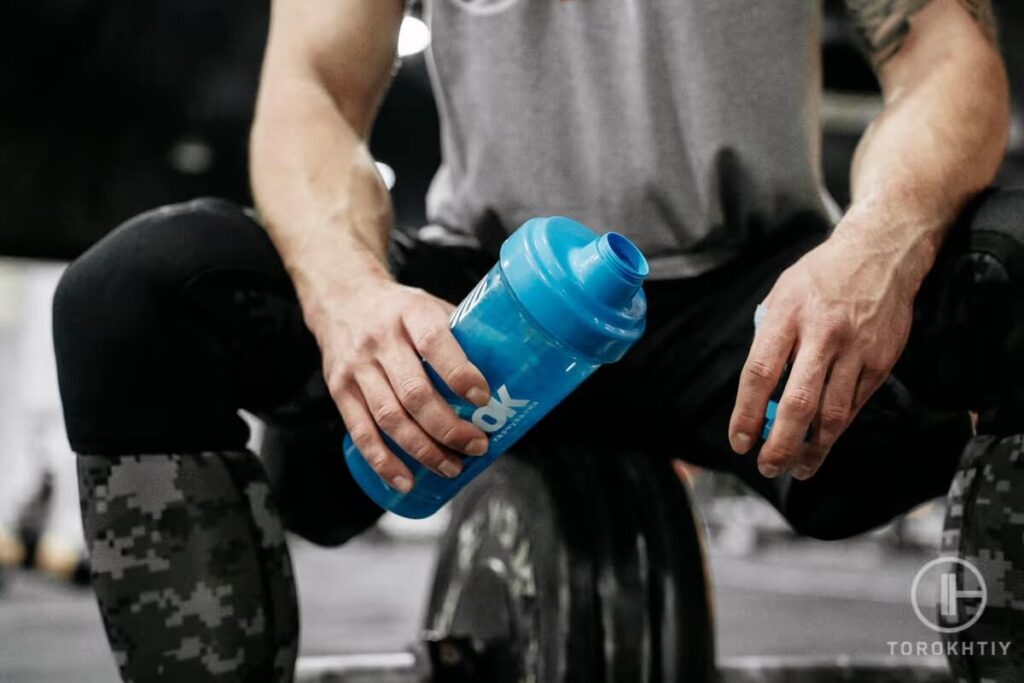
1. Additional Ingredients
As you have already seen, there are not so many calories in a protein shake with milk, because a cup of skimmed cow’s milk adds 85 kcal. However, it is also very popular to add fruits, peanut butter, avocado, and other ingredients.
All of these products are very nutritious, but at the same time, the protein drink calories increase. If you add fruit, peanut butter and seeds, protein smoothie calories will be much higher than if you add only milk or juice.
For example, by mixing one serving of whey protein powder, a cup of skim milk, a cup of blueberries, a teaspoon of peanut butter and a teaspoon of chia seeds in a smoothie, we will get approximately 400 calories.
While mixing protein powder only with a cup of skim milk, we will get about 200 kcal. As for the calories in a protein shake with water, their number will be equal to the number of calories contained in a serving of protein powder.
As you can see, if you are counting calories as part of your weight loss diet, you would do well to consider the caloric load of your mix-ins too.
2. What Should You Pay Attention to Besides the Calories and Macros?
Before taking a closer look at some of the best protein supplements offerings, I want to focus your attention on key factors to consider when choosing a product. After all, not only calories in whey protein shake (or casein, pea, rice protein shake) are important.
Protein source: protein sources can be of animal and plant-based origin: milk protein (a blend of whey and casein), casein, whey, beef, egg, pea, rice, hemp and other. The key factor that dictates which protein source is right for you is the absence or presence of allergies to milk, egg, or soy protein.
For example, if you are allergic to milk proteins, you cannot use milk protein, whey protein, and casein.
Additionally, the protein source should be chosen based on your diet (omnivorous, vegetarian, or vegan), gastrointestinal tolerance, taste preferences, and budget. For example, whey protein isolate may be suitable for people with lactase deficiency, while whey concentrate is not.
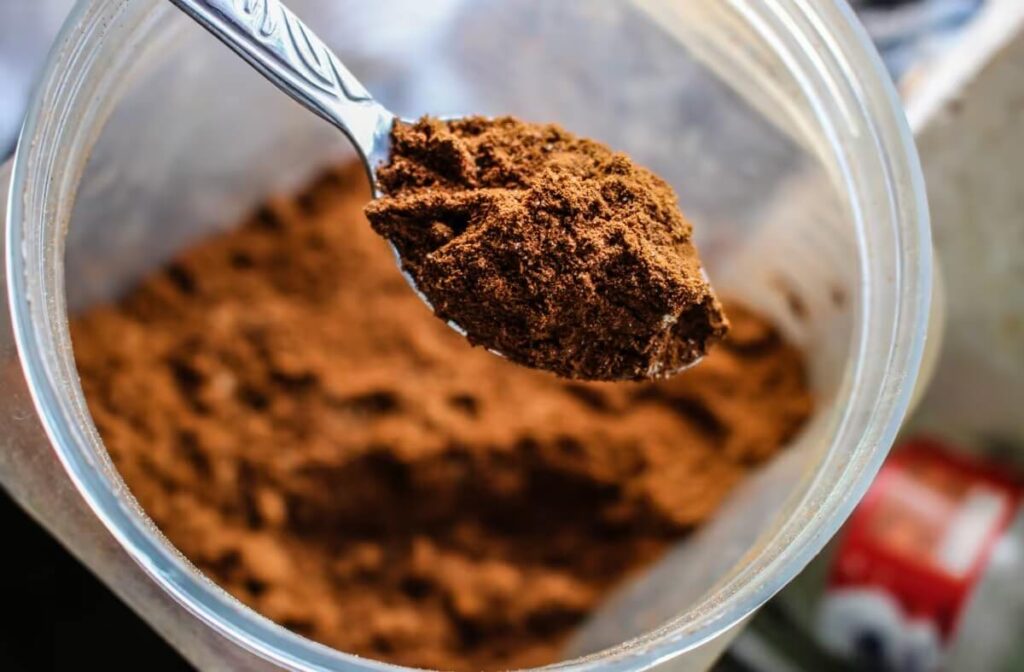
Additional ingredients: after carefully reading the composition, you can understand what food additives the manufacturer has used in his product. If you have an intolerance or sensitivity to specific ingredients, you can choose a product that does not contain them.
Overall, if you have any medical conditions, take medications (which may interact with ingredients), or have a food allergy or intolerance, it’s important to read the whole ingredients list to ensure the protein supplement does not contain ingredients that may cause problems.
Quality testing and safety: it is always better to prefer a supplement that has been tested and certified by a third party. This will minimize the risks that the product will contain some prohibited substance or an unacceptable level of heavy metals.
Pay attention to the reputation of the brand and whether their product is certified by a third party like NSF International, Informed Choice or Informed Sport.
High Calories Protein Shakes
If you are faced with the task of gaining muscle mass and / or increasing the total calorie content of your diet, a high-calorie protein shake will help with this. In order to make such a shake or smoothie, it is recommended to:
- Mix protein powder with milk (cow’s or plant-based) or juice.
- If desired, add plain yogurt.
- Add fruits or berries.
- Add a source of fat, such as peanut butter, ripe avocado, and/or chia seeds.
Fruits add a significant portion of carbohydrates; milk and Greek yogurt – additional portions of protein and carbs, plus from zero to significant amounts of fat; and nut butter and seeds – a large portion of fat and a significant amount of protein.
By mixing these ingredients into a shake or smoothie in different proportions, you can greatly vary the calorie and macros of your protein shake. What’s more, by adding foods that contain significant amounts of protein (cow’s milk, Greek yogurt, peanut butter), you can increase the total amount of protein in the shake. In this case you can even optimize your budget by adding less protein powder.
Below you can see example of high-calorie protein shake
Banana-Milk Protein Shake
- 1 serving of whey protein powder (chocolate flavor)
- 300 ml of skimmed milk
- 1 medium banana
- 1 heaped teaspoon of peanut butter (15 g)
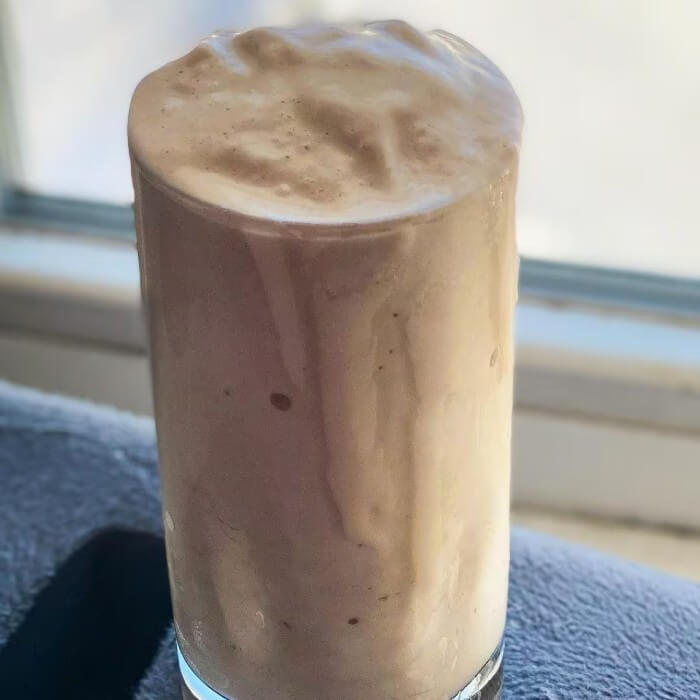
Calories: 460
Protein: 40 grams
Carbs: 50 grams
Fat: 11 grams
Bonus tip: if you are using a shaker bottle, pour the liquid first, THEN add the protein powder! This will help to avoid the lumps.
Protein We Recommend for High Calorie Shake – Cellucor Whey Sport Protein
For a high-calorie shake, a protein that already contains a relatively high number of calories per serving is best, and whey protein from the Cellucor is perfect for this goal. One serving contains as much as 30 grams of protein, 5 grams of carbohydrates, 2.5 grams of fat, and 160 calories.
Another key benefits of this product include:
- Added 2.5 grams of creatine monohydrate per serving,
- Added protease and lactase enzymes to improve the digestion of protein and lactose,
- No added sugar (which should be limited even when gaining weight),
- Third-party certification from NSF International,
- An excellent ratio of the price per serving to the amount of protein and added ingredients (creatine, enzymes).
Let me remind you that creatine monohydrate is the most effective and best-studied sports supplement. If you want to improve strength, recovery and promote gaining of muscle mass, this is the #1 supplement!
Low Calories Protein Shakes
The lowest calorie content of protein powder that you can find on the market is 90-100 kcal per serving. Such powders typically contain zero to trace amounts of carbohydrates and fats, and have the best protein-to-weight ratio per serving. We recommend one of these products below.
Recommended Product – Isopure Unflavored Whey Isolate Protein Powder
It is 100% whey protein isolate, which contains only protein and lecithin for creating a creamy mouthfeel. Zero carbs, fats, no sweeteners or any other food additives! And it does not contain lactose, which makes it a perfect candidate for people with milk sugar intolerance.
A serving of this protein from a reputable brand contains 25 grams of protein and 100 calories. Yes, every calorie comes only from protein! This is one of the best proteins on the market for those looking for a concentrated source of protein with minimal calories! If you want to lose weight and enrich your diet with a portion of high-quality protein, this product may be just what you are looking for.
What Are The Calories In Ready-Made Protein Shakes?
If you don’t want to spend a single second making shakes and experimenting with flavors and ingredients, ready-to-drink protein beverages come in handy. It is one of the easiest and most convenient ways to add protein to your day, particularly if you’re on the go. One of the best offers we can recommend is Premier Protein. This is a winner of the American Masters of Taste Gold Medal for Superior Tasting ready-to-drink protein beverages.
Recommended Product – Premier Protein Shake
One drink contains 30 grams of high-quality protein, up to 5 grams of carbohydrates (depending on the flavor you choose), 3 grams of fat and 160 calories. In addition – up to 3 grams of dietary fiber, plus added blend of vitamins and minerals. A huge portion of calcium deserves special attention – as much as 650 mg!
This product does not contain a single gram of added sugar and gives you 13 flavors to choose from. You don’t have to waste time experimenting with ingredients, because the manufacturer has already created formulas with great flavors and texture!
FAQ
Are Protein Shakes Good for Weight Loss?
Yes, because during weight loss the need for protein increases. It helps preserve and even increase muscle mass, as well as maintain a feeling of satiety in conditions of a hypocaloric diet. A sufficient amount of protein in your meal plan will help reduce the risk of overeating and maintain consistency in nutrition.
Consistency with diet, minimizing muscle loss and maintaining a feeling of satiety are the key goals during weight loss!
Is 200 Calories a Lot for a Protein Shake?
If your goal is to increase the amount of protein on a weight loss diet, then 200 kcal may be too much. In order to add a portion of protein in a convenient form of a shake, but at the same time minimize the calorie content of the drink, it is better to mix it with water.
You can also choose to add water and skim (or plant-based) milk in a 50/50 ratio. Or mix with water, adding half a banana or half a glass of berries for better taste.
Are 50 Grams of Protein Too Much for One Shake?
If you are comfortable eating 50 g of protein from one shake and you do not have digestive problems, then this is OK. The claim that we can only digest and absorb up to 30 grams of protein taken at one time is incorrect.
Conclusion
A high-protein shake can contain only 90 calories if the powder is mixed with water only. When adding milk, juice and/or other ingredients, the caloric content can be easily increased by 2-3 or more times.
When preparing a shake, pay attention to the calorie content and distribution of macronutrients in the powder itself, the liquid you add, as well as fruits and other ingredients.
Are there any other questions you would like to hear the answer to? Let’s continue in the comments.
Also read:
- Can You Put Oats in a Protein Shake
- Can You Mix Protein Powder With Coffee
- Thicken Protein Shakes
- How Many Scoops Of Protein Powder A Day
- Best Protein Powder For Beginners
- Ensure vs Premier Protein
- Best Protein Powder With Caffeine
- Does Protein Powder Have Caffeine
- Does Protein Help You Poop
References:
- Whey Protein Isolate vs Concentrate: What’s The Difference? // HealthLine: https://www.healthline.com/nutrition/whey-protein-isolate-vs-concentrate
- Protein hydrolysates in sports nutrition // BioMedCentral: https://nutritionandmetabolism.biomedcentral.com/articles/10.1186/1743-7075-6-38
- Be Sugar Smart: Limiting Added Sugars Can Improve Health // Center for Disease: https://www.cdc.gov/nutrition/data-statistics/be-sugar-smart.html
- International Society of Sports Nutrition position stand: safety and efficacy of creatine supplementation in exercise, sport, and medicine // BioMedCentral: https://jissn.biomedcentral.com/articles/10.1186/s12970-017-0173-z#CR8
- How Much Protein Can You Eat In One Sitting? // Examine: https://examine.com/articles/how-much-protein-can-you-eat-in-one-sitting/
Why Trust Us?
With over 20 years in Olympic Weightlifting, our team does its best to provide the audience with ultimate support and meet the needs and requirements of advanced athletes and professional lifters, as well as people who strive to open new opportunities and develop their physical capabilities with us.
By trusting the recommendations of our certified experts in coaching, nutrition, dietology, and sports training programming, as well as scientific consultants, and physiotherapists, we provide you with thorough, well-considered, and scientifically proven content. All the information given in the articles concerning workout programming, separate exercises, and athletic performance, in general, is based on verified data. We ensure that you can rely on our professionals’ pieces of advice and recommendations that can be treated as personalized ones which will benefit you and fully meet your needs.
The product testing process is described in more detail here
Author: Oleksandr Maksymenko
Certified Sports Nutritionist,
MSc Sports Dietetics
Specializing in: Weight management, Fitness / Sports nutrition
Oleksandr is a professional fitness nutritionist certified by the Fitness Professional Association (FPA). He follows the principles of evidence-based dietetics and fosters a healthy relationship with food in his clients, ensuring there are no strict prohibitions on their favorite foods or frequent lapses. His primary goal is not only to achieve results for you but also to sustain them over the long term, all while enjoying tasty and delicious food.

